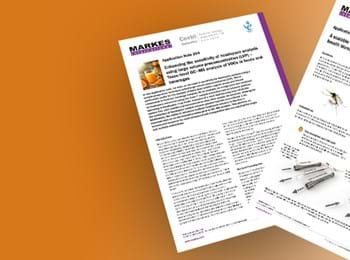Content hub
From application notes to blogs, news items to infographics, we've got a wealth of advice about VOC and SVOC analysis that we'd like to share with you. Simply use the search function or use the drop-down selectors to filter by content type, sampling method and/or application area to discover more.

'How to' video
How to use the calibration tools for the Micro-Chamber/Thermal Extractor
Explore
'How to' video
How to use the Micro-Chamber/Thermal Extractor SPF cutter
Explore
'How to' video
How to replace the focusing trap on the TD100-xr
Explore
'How to' video
How to replace the focusing trap on the UNITY-xr
Explore
'How to' video
How to replace the fused silica transfer line to the GC
Explore
'How to' video
How to change Split tube O-rings on the TD100-xr and UNITY-xr
Explore
Application note
Explore
Completely cryogen-free monitoring of PAMS ozone precursors, TO-15 air toxics and OVOCs in ambient air in a single run
Application Note 146

Application note
Explore
Extending whole-air monitoring: Simultaneous cryogen-free analysis of PAMS ozone precursors and TO-15 air toxics from canisters in accordance with new Chinese air-monitoring regulations
Application Note 145

Application note
Explore
A technical guide to the analysis of VOC and FOG emissions from automotive interior materials by direct desorption TD–GC–MS in accordance with VDA 278
Application Note 142

Application note
Explore
Analysis of VOC and FOG emissions from automotive interior materials by direct desorption TD–GC–MS in accordance with VDA 278
Application Note 141

Application note
Explore
Quantitative analysis of airborne semi-volatile flame retardants using sorbent tube sampling with TD–GC–MS
Application Note 140

Application note
Explore
High-performance analysis of polycyclic aromatic hydrocarbons (PAHs) by TD–GC–MS: Method validation and case-study
Application Note 139

Application note
Explore
A robust TD–GC–MS method for the determination of trace-level phthalate esters in air – Method validation and field study
Application Note 138

Application note
Explore
Quantitative determination of semi-volatile polychlorinated biphenyls (PCBs) using TD–GC–MS
Application Note 137

Application note
Explore
The performance of thermal desorption for the quantitative analysis of long-chain hydrocarbons
Application Note 136

Application note
Explore
The complementary roles of dynamic headspace and sorptive extraction in the analysis of fragranced consumer products using TD–GC–MS
Application Note 135

Application note
Explore
Rapid forensic analysis of fire debris using headspace sampling onto sorbent tubes with TD–GC–MS
Application Note 134

Application note
Explore
Going beyond the requirements of US EPA Method TO-15: Innovative cryogen-free ambient air monitoring of trace-level air toxics at high humidity
Application Note 133




